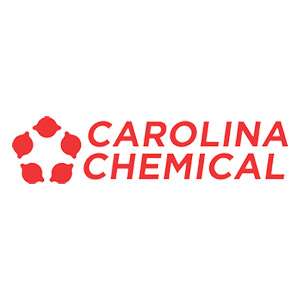100g
Showing 1801–1850 of 2169 results
-
![Sodium 1-Hexanesulfonate, [Reagent for Ion-Pair Chromatography]](https://advatechgroup.com/wp-content/plugins/woocommerce/assets/images/xplaceholder.webp.pagespeed.ic.ANHCL-f_RA.webp)
Sodium 1-Hexanesulfonate, [Reagent for Ion-Pair Chromatography]
$431.49 Add to cart View Product DetailsSodium 1-Hexanesulfonate, [Reagent for Ion-Pair Chromatography]
-

Sodium 1-Octanesulfonate
$264.96 Add to cart View Product DetailsSodium 1-Octanesulfonate
-
![Sodium 1-Octanesulfonate, [Reagent for Ion-Pair Chromatography]](https://advatechgroup.com/wp-content/plugins/woocommerce/assets/images/xplaceholder.webp.pagespeed.ic.ANHCL-f_RA.webp)
Sodium 1-Octanesulfonate, [Reagent for Ion-Pair Chromatography]
$291.46 Add to cart View Product DetailsSodium 1-Octanesulfonate, [Reagent for Ion-Pair Chromatography]
-

Sodium 1-Octanesulfonate, 98+ Percent, Reagent
$316.41 Add to cart View Product DetailsSodium 1-Octanesulfonate, 98+ Percent, Reagent
-
![Sodium 1-Pentanesulfonate, [Reagent for Ion-Pair Chromatography]](https://advatechgroup.com/wp-content/plugins/woocommerce/assets/images/xplaceholder.webp.pagespeed.ic.ANHCL-f_RA.webp)
Sodium 1-Pentanesulfonate, [Reagent for Ion-Pair Chromatography]
$426.42 Add to cart View Product DetailsSodium 1-Pentanesulfonate, [Reagent for Ion-Pair Chromatography]
-

Sodium 3-Mercapto-1-propanesulfonate
$117.31 Add to cart View Product DetailsSodium 3-Mercapto-1-propanesulfonate
-

Sodium Acetylacetonate Monohydrate
$360.74 Add to cart View Product DetailsSodium Acetylacetonate Monohydrate
-

Sodium Arsenate, Heptahydrate, Crystal, Reagent, ACS
$909.51 Add to cart View Product DetailsSodium Arsenate, Heptahydrate, Crystal, Reagent, ACS
-

Sodium Ascorbate, FCC
$56.95 Add to cart View Product DetailsSodium Ascorbate, FCC
-

Sodium Ascorbate, Powder, USP
$52.73 Add to cart View Product DetailsSodium Ascorbate, Powder, USP
-

Sodium Azide
$55.52 Add to cart View Product DetailsSodium Azide
-

Sodium Azide, Reagent, ACS
$126.29 Add to cart View Product DetailsSodium Azide, Reagent, ACS
-

Sodium Barbital (CIV), Powder, Purified
$917.57 Add to cart View Product DetailsSodium Barbital (CIV), Powder, Purified
-

Sodium Bis(2-methoxyethoxy)aluminum Dihydride, (70 Percent in Toluene, ca. 3.6mol/L)
$79.49 Add to cart View Product DetailsSodium Bis(2-methoxyethoxy)aluminum Dihydride, (70 Percent in Toluene, ca. 3.6mol/L)
-

Sodium Bismuthate, Powder, Reagent, ACS
$246.51 Add to cart View Product DetailsSodium Bismuthate, Powder, Reagent, ACS
-

Sodium Borohydride
$84.50 Add to cart View Product DetailsSodium Borohydride
-

Sodium Borohydride Powder – 100G
$66.24 Add to cart View Product DetailsCAS Number 16940-66-2 Molecular Weight 37.83 Molecular Formula NaBH4 -

Sodium Borohydride, Crystalline Powder, Reagent, ACS
$246.62 Add to cart View Product DetailsSodium Borohydride, Crystalline Powder, Reagent, ACS
-

Sodium Butyrate
$45.44 Add to cart View Product DetailsSodium Butyrate
-

Sodium Caprylate
$69.06 Add to cart View Product DetailsSodium Caprylate
-

Sodium Carbonate, Anhydrous, FCC
$42.55 Add to cart View Product DetailsSodium Carbonate, Anhydrous, FCC
-

Sodium Chlorite, Anhydrous, Flakes
$64.86 Add to cart View Product DetailsSodium Chlorite, Anhydrous, Flakes
-

Sodium Cholate, Reagent
$164.15 Add to cart View Product DetailsSodium Cholate, Reagent
-

Sodium Chromate, Anhydrous
$106.98 Add to cart View Product DetailsSodium Chromate, Anhydrous
-

Sodium Citrate, Anhydrous, Powder, FCC
$65.92 Add to cart View Product DetailsSodium Citrate, Anhydrous, Powder, FCC
-

Sodium Citrate, Anhydrous, Reagent
$51.89 Add to cart View Product DetailsSodium Citrate, Anhydrous, Reagent
-

Sodium Decanoate
$176.62 Add to cart View Product DetailsSodium Decanoate
-

Sodium Deoxycholate
$871.88 Add to cart View Product DetailsSodium Deoxycholate
-

Sodium Dicyanamide
$142.57 Add to cart View Product DetailsSodium Dicyanamide
-

Sodium Ethoxide
$35.34 Add to cart View Product DetailsSodium Ethoxide
-

Sodium Formaldehyde Bisulfite
$74.24 Add to cart View Product DetailsSodium Formaldehyde Bisulfite
-

Sodium Hyaluronate, EP
$9,792.14 Add to cart View Product DetailsSodium Hyaluronate, EP
-

Sodium Hydride, (60 Percent, dispersion in Paraffin Liquid)
$65.62 Add to cart View Product DetailsSodium Hydride, (60 Percent, dispersion in Paraffin Liquid)
-

Sodium Hydride, 60 Percent Dispersion in Mineral Oil
$233.52 Add to cart View Product DetailsSodium Hydride, 60 Percent Dispersion in Mineral Oil
-

Sodium Hydrosulfite, Powder, Technical
$49.13 Add to cart View Product DetailsSodium Hydrosulfite, Powder, Technical
-

Sodium Hydroxide-d, 99+ Atom Percent D, 40 Percent (w/w) solution in D2O
$625.99 Add to cart View Product DetailsSodium Hydroxide-d, 99+ Atom Percent D, 40 Percent (w/w) solution in D2O
-

Sodium Iodate, Powder, Reagent
$193.64 Add to cart View Product DetailsSodium Iodate, Powder, Reagent
-

Sodium Lauroyl Sarcosine
$145.31 Add to cart View Product DetailsSodium Lauroyl Sarcosine
-

Sodium Lauryl Sulfate, Reagent
$123.07 Add to cart View Product DetailsSodium Lauryl Sulfate, Reagent
-

Sodium Lignosulfonate, Technical
$129.32 Add to cart View Product DetailsSodium Lignosulfonate, Technical
-

Sodium Metatungstate
$501.35 Add to cart View Product DetailsSodium Metatungstate
-

Sodium Methoxide
$27.74 Add to cart View Product DetailsSodium Methoxide
-

Sodium n-Hexadecyl Sulfate
$290.41 Add to cart View Product DetailsSodium n-Hexadecyl Sulfate
-

Sodium Octyl Sulfate
$2,379.43 Add to cart View Product DetailsSodium Octyl Sulfate
-

Sodium Oleate
$114.76 Add to cart View Product DetailsSodium Oleate
-

Sodium Oleate
$160.22 Add to cart View Product DetailsSodium Oleate
-

Sodium p-Styrenesulfonate, Hydrate
$90.82 Add to cart View Product DetailsSodium p-Styrenesulfonate, Hydrate
-

Sodium Poly(naphthaleneformaldehyde)sulfonate
$114.61 Add to cart View Product DetailsSodium Poly(naphthaleneformaldehyde)sulfonate
-

Sodium Polyanetholesulfonate
$2,086.18 Add to cart View Product DetailsSodium Polyanetholesulfonate
-

Sodium Pyruvate, Reagent
$148.72 Add to cart View Product DetailsSodium Pyruvate, Reagent






